It is purportedly the intension of The Australian Institute of Marine Science (AIMS), specifically their Long Term Monitoring program, to detect changes in reef communities at a number of different scales including at the scale of the individual reef, sub-region and between the northern, central and southern Great Barrier Reef.
But. If this monitoring is not even able to detect the extraordinary damage inflicted by Tropical Cyclone Kirrily on John Brewer Reef it cannot be considered fit for purpose.
To reiterate, John Brewer reef as an ecosystem was approaching climax, in all its beauty, when it was smashed by TC Kirrily early this year, on 25th January 2024.
This severe category three cyclone sat for two long hours over the top of this spectacular mid-shelf reef unleashing such destruction and yet the AIMS’s monitoring program has no record of it. According to their monitoring program there is nothing to see, they are in denial of this cyclone.
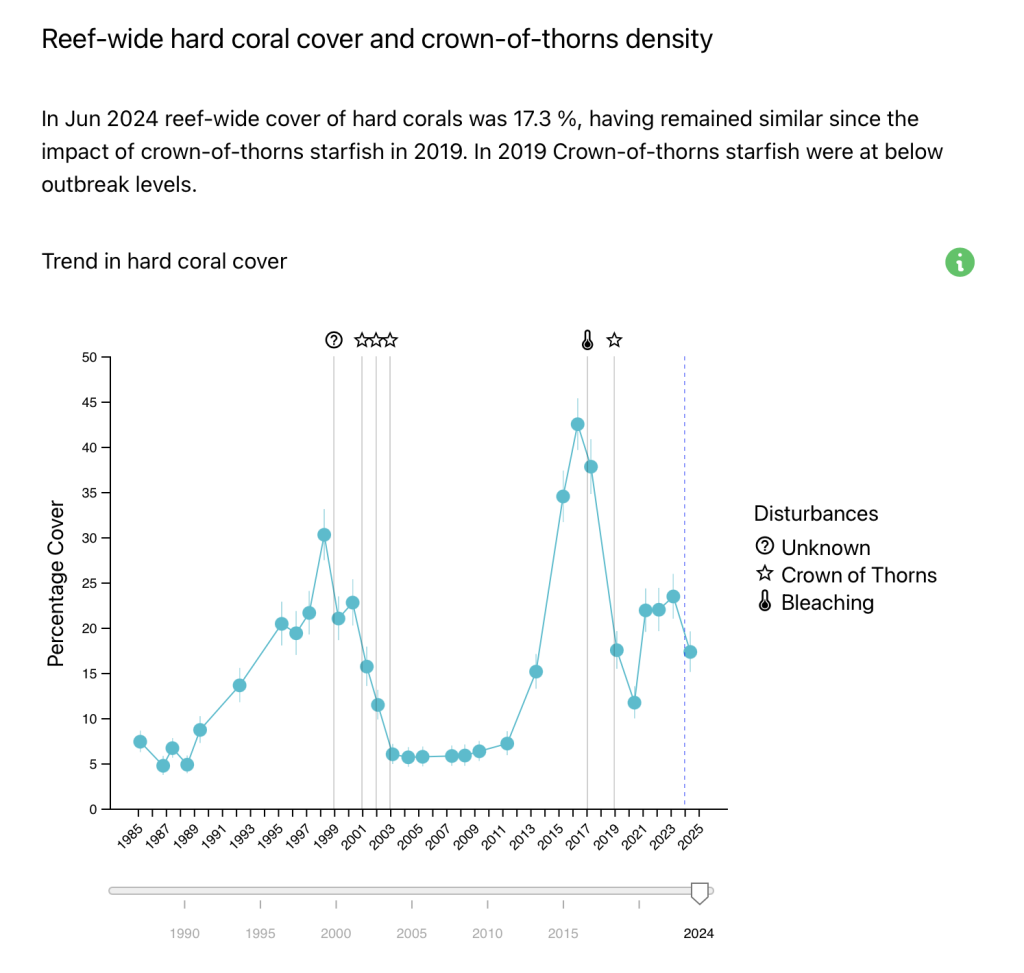
This reef, John Brewer reef, was surveyed in March 2022 and then again in June 2024 – and yet percentage coral cover change is little change: just 23 percent before TC Kirrily to now officially 17 percent in the latest June 2024 survey – and yet so much healthy, hard coral was destroyed in between!
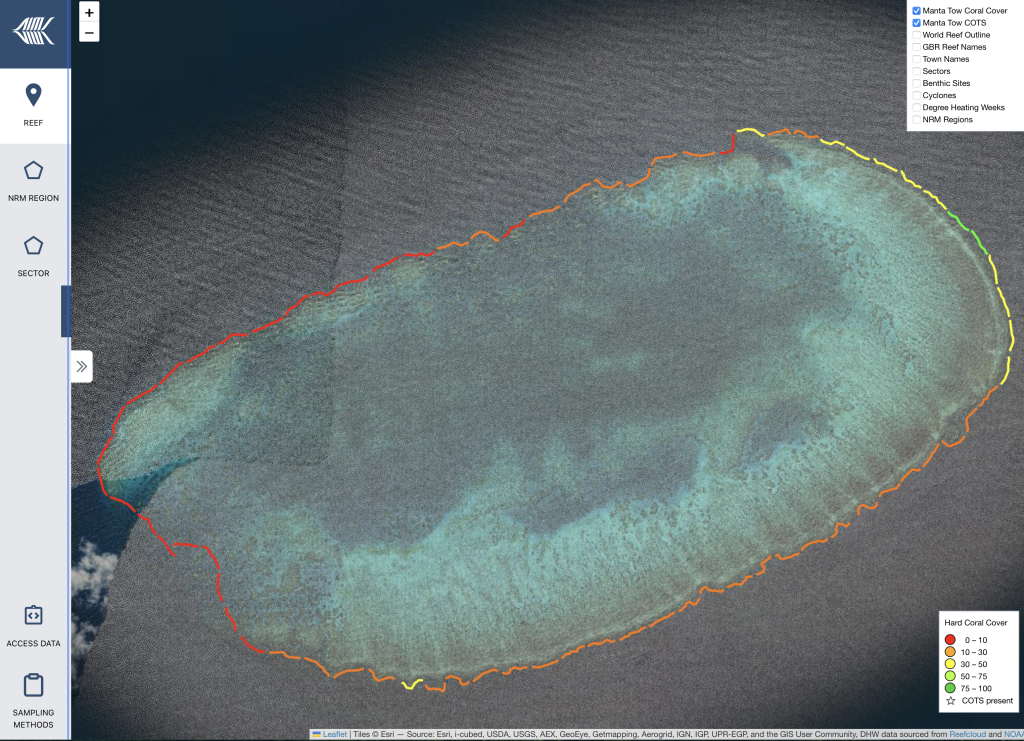
The ‘core survey reef sample’, as explained by AIMS comprises ‘Manta tow surveys, which collect information in a standard reef slope habitat around the perimeter of each reef’. The technique involves towing a snorkel diver at a constant speed behind a boat around the perimeter of each reef. Every two minutes the observer records their visual assessment of hard coral cover onto a data sheet into one of five categories that correspond to very low (0-10%), low (10-30%), medium (30-50%), high (50-75%), and very high (75-100%) hard coral cover.
In the AIMS reports, and at the AIMS website that explains this, it is emphasised that ‘the methodology is consistent’, the tow is always ‘clockwise’ around the perimeter of each reef.
But what is the objective? If it is to be able to report on changes in hard coral cover between reefs and across regions, then the observer needs to be ‘towed’ or otherwise given access to representative reef habitats. It is pointless if the observer is towed away from the habitat where the fish tend to congregate, which is where there is more coral that is at the reef crest.
TC Kirrily did most damage at John Brewer reef in the shallower sections, including at the reef crest. Yet the manta tow surveys around the reef perimeter are typically at a depth of 8-9 metres. By their very design these surveys, that are at the core of the AIMS Long Term Monitoring program, they cannot capture disturbance from the major natural source of catastrophes that regularly befall coral reefs at the Great Barrier Reef – tropical cyclones.

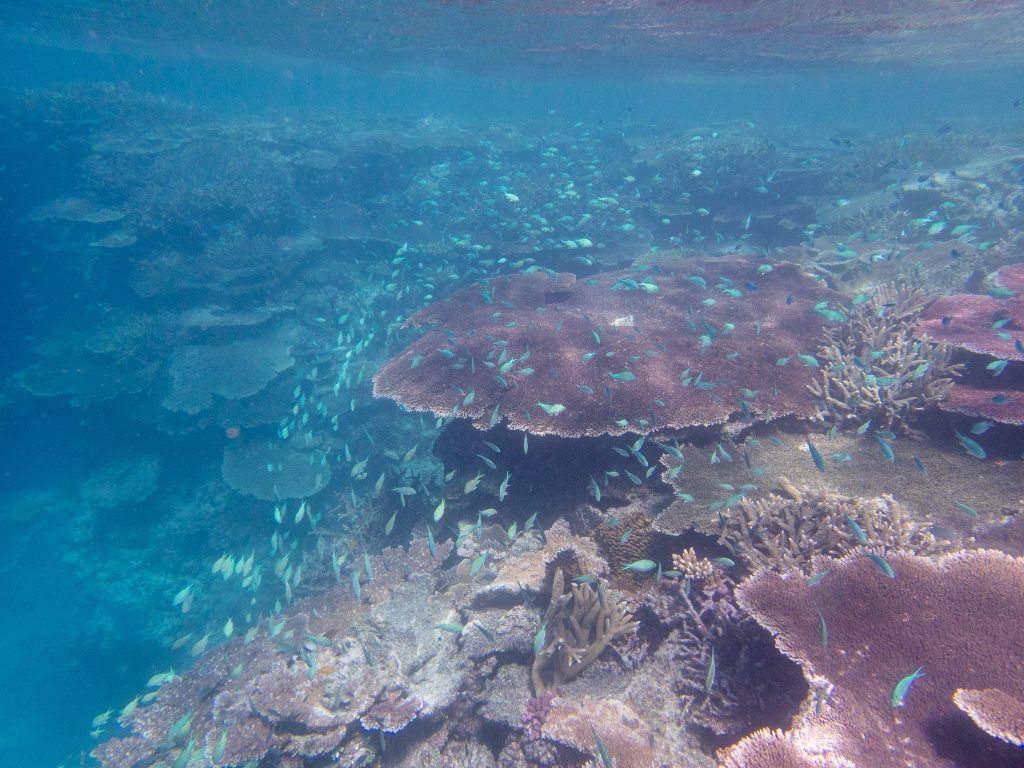
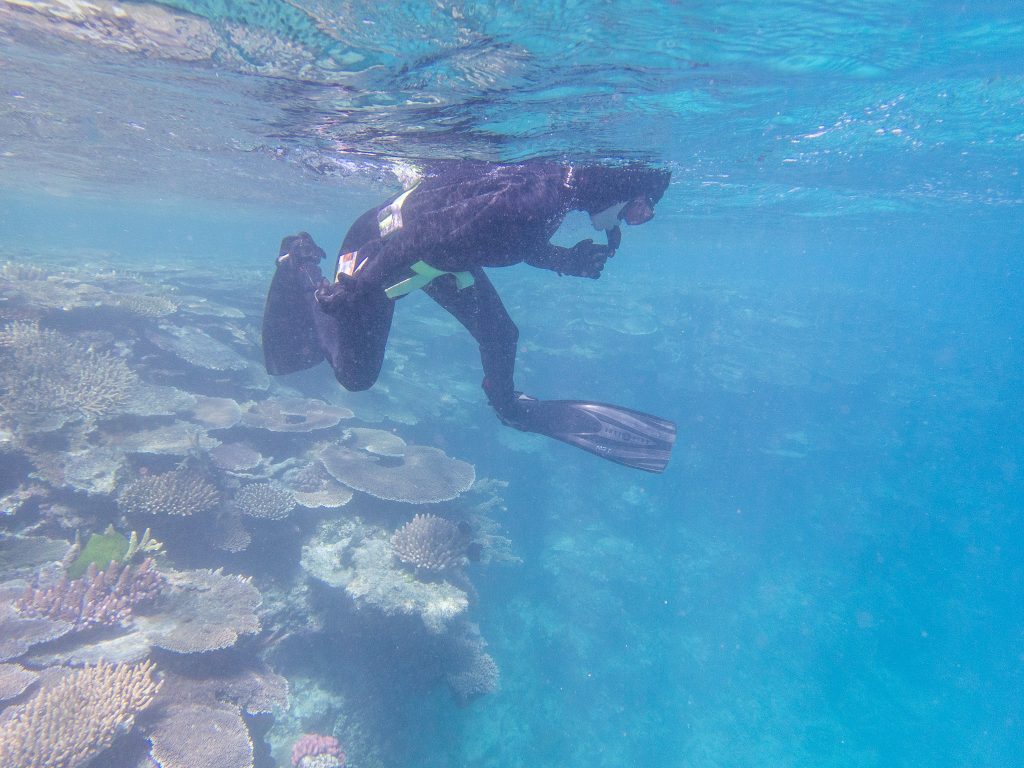
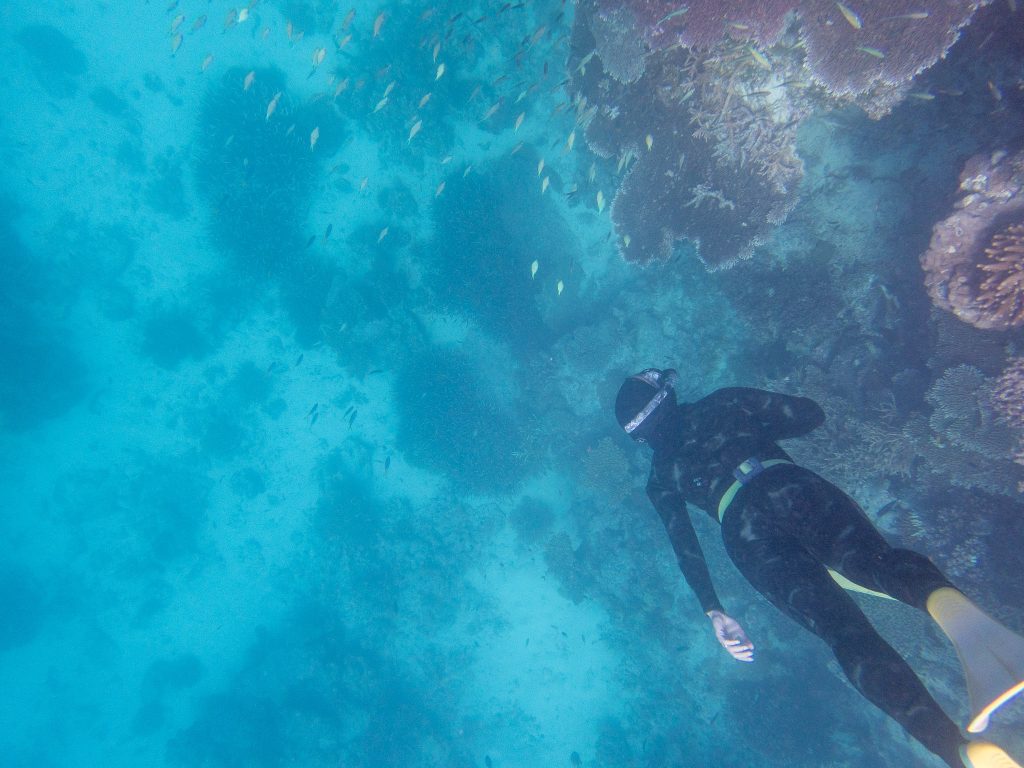
It doesn’t matter that the observer is always towed around the perimeter, and it doesn’t matter that this is always done in a clockwise direction if this is not where all the coral is, particularly the coral at a reef like John Brewer Reef before TC Kirrily – a coral reef approaching climax.
If the objective is to monitor change in coral cover, then habitats where coral is concentrated will need to be monitored as part of any program committed to understanding change.
According to Dr Mike Emslie, the leader of this project:
Information from LTMP has been instrumental in apprising the Great Barrier Reef Marine Park Authority (GBRMPA), government and stakeholders on the status of the GBR and uses web-based reporting products to ensure timely dissemination of information upon completion of each survey cruise. Upon completion of each field season, an online annual update on the status of the GBR is produced, along with substantial media exposure.
LTMP data also feeds directly into the five yearly GBR Outlook Report produced by the GBRMPA under the auspices of the Australian Governments Reef 2050 Sustainability Plan.
The monitoring program at John Brewer reef began in 1985, nearly forty years ago, yet as far as I can tell, never in all this time has any relevant data been consistently gathered about hard coral cover at the reef crest, where the coral and fish are concentrated.
If there is no relevant data, then we can’t know what the cumulative effects of more or fewer cyclones or bleaching events is on coral cover, not in any meaningful way. Yet this is one of the key tax-payer funded programs, relied upon not just by my colleague Peter Ridd, but also government and the media to know the state of the Great Barrier Reef.
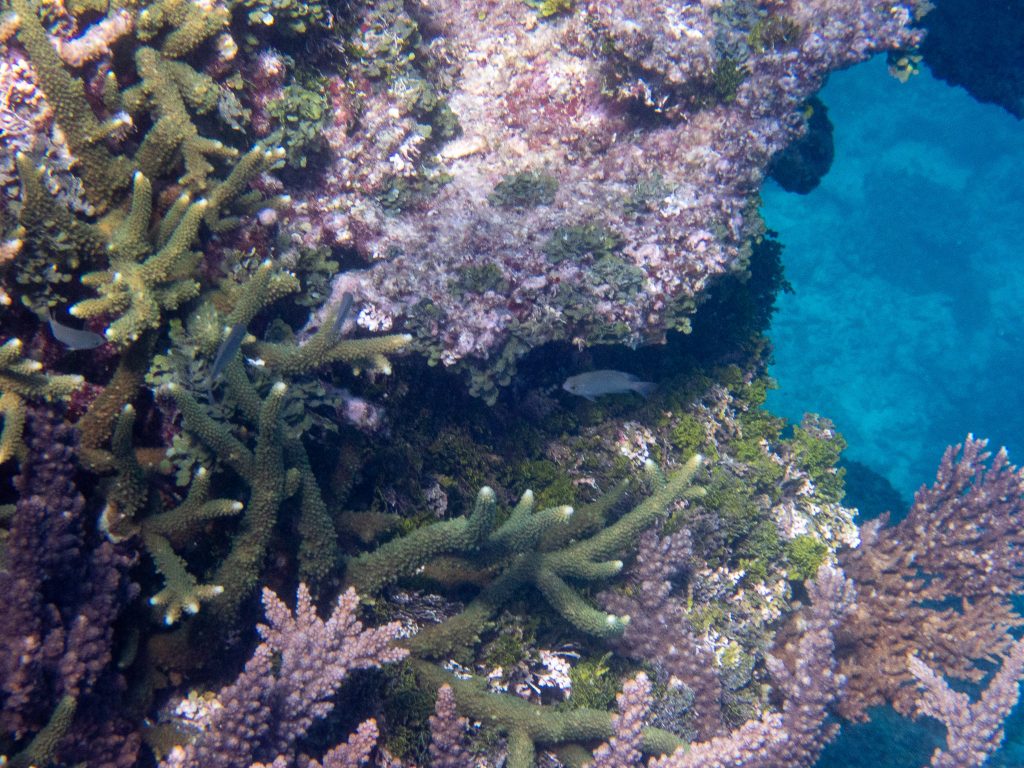
And, while there might be 3,000 coral reefs, John Brewer Reef is something of the jewel in the crown considering the central region of the Great Barrier Reef – something of greater value amongst other valuable things? This coral reef to the north-east of Townsville was once home to a floating hotel, that was back in the 1980s. More recently, and somewhat more modestly, John Brewer has been given its own Museum of Underwater Art. It does matter that we know how hard coral cover at John Brewer reef changes, and what the key drivers are, of this change.
via Jennifer Marohasy
June 26, 2024 at 06:33PM
